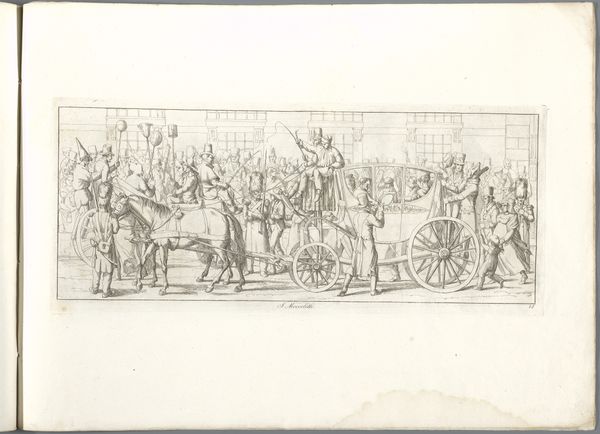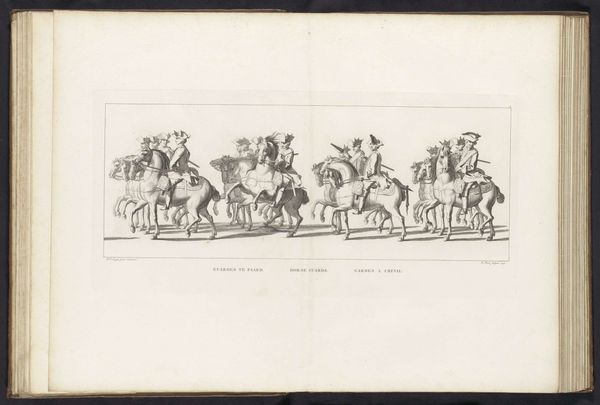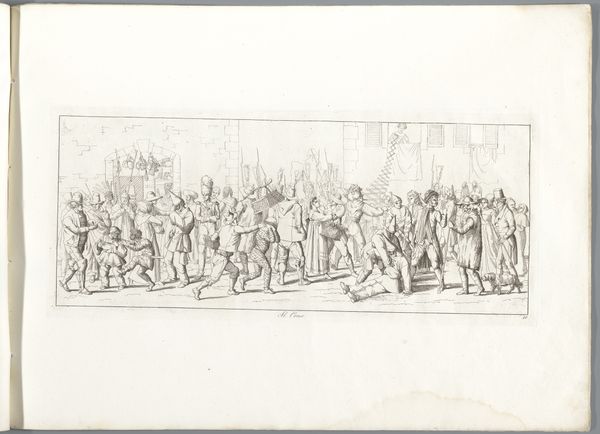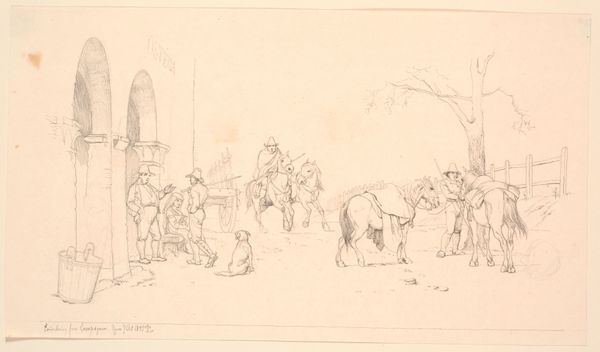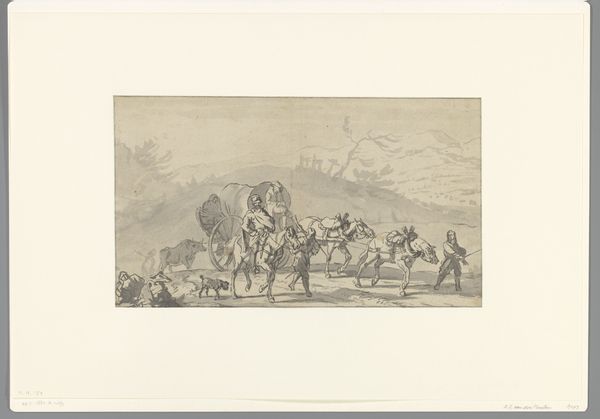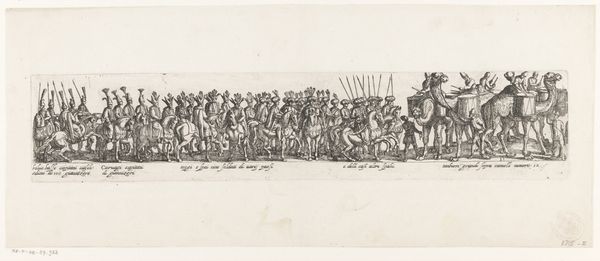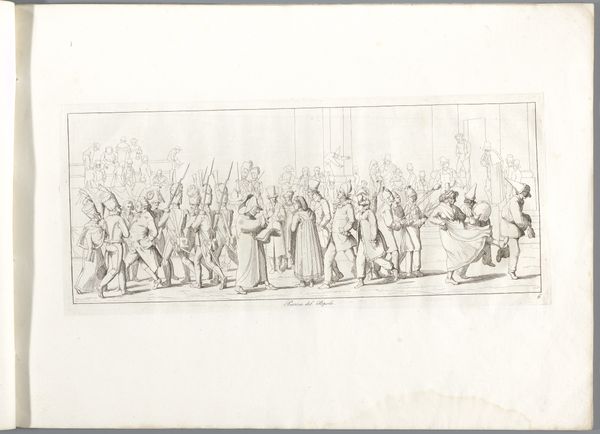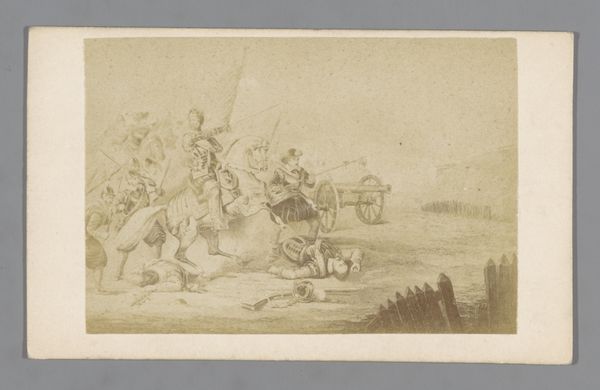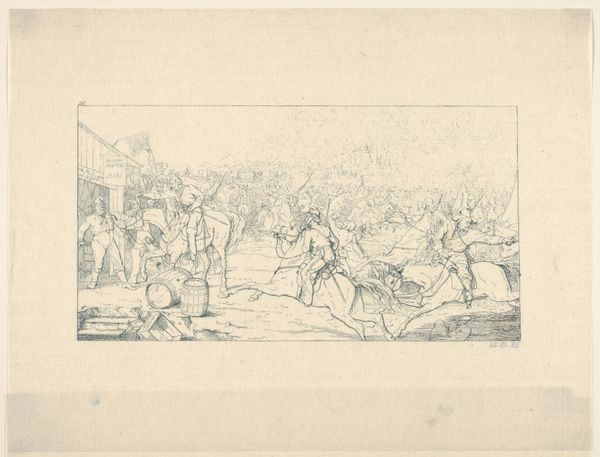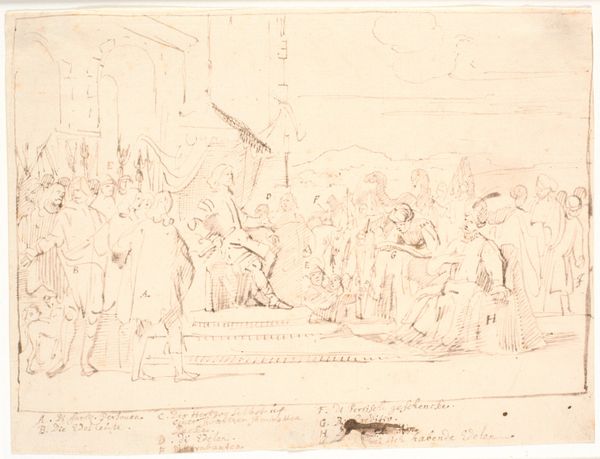
drawing, ink, pencil
#
drawing
#
neoclacissism
#
ink drawing
#
pen sketch
#
ink
#
pencil
#
cityscape
Dimensions: height 205 mm, width 475 mm, height 413 mm, width 568 mm
Copyright: Rijks Museum: Open Domain
Curator: Carl Gustaf Hjalmar Mörner created this pen and ink drawing, "Piazza del Popolo," around 1820. Editor: There’s an immediate delicacy to the linework; it feels almost like witnessing a fleeting, ghostly procession. A hint of the everyday filtered through a neoclassical lens. Curator: Mörner’s choice of ink and pencil as a means for production lends itself perfectly to capturing the architectural precision and bustling public life indicative of the era, especially regarding neoclassical art. We're witnessing a crafted performance with deliberate choreography. Editor: Performances are exactly what come to my mind – and specifically power. Look at the lines of carriages; who gets to ride, who gets to walk, who is actively subjugated to providing the material labor? And the military personnel; these figures tell a story of hierarchy and class, of a world actively being shaped by—and for—the elite. It asks: What bodies and lives are expendable within that pursuit of Neoclassical order? Curator: That question of expendability resonates, given the tension inherent in this method. Pen and ink, combined with pencil, demand a level of pre-planning that aligns with Neoclassicism's values of rationality and order. We can almost follow the invisible threads connecting pencil sketching with the stark permanence of ink. It seems like the final procession depicted here only results in this planned approach to production, which feels extremely purposeful, considering the themes within the work. Editor: Right, and I wonder, how can we actively deconstruct this supposed perfect social hierarchy within Neoclassicism by showcasing those outside these imagined parameters? Is there a future in depicting labor and those previously excluded within this idealized urban planning? Curator: By foregrounding materials and process, we uncover this historical record’s complexities while reminding ourselves to look critically. Perhaps Mörner's “Piazza del Popolo” becomes more of an interrogation rather than an affirmation of order, don’t you think? Editor: Definitely, understanding how it was made, for whom it was made, encourages dialogue to be critically examined for our own moment in time. Curator: I appreciate that perspective. It leaves us contemplating how artistic choices shape our understanding of the past and influence the course of potential futures. Editor: Yes, by examining the foundations and frameworks that uphold and dictate that historical and political context, Mörner's "Piazza del Popolo" opens a necessary and critical dialogue to expand on this depiction of reality.
Comments
No comments
Be the first to comment and join the conversation on the ultimate creative platform.

